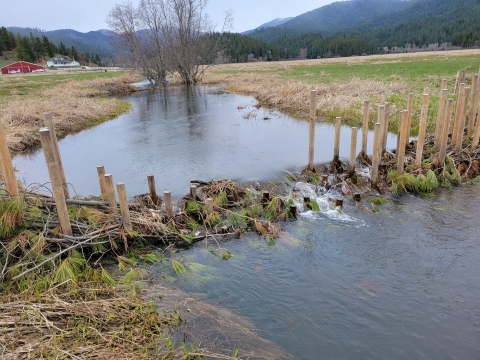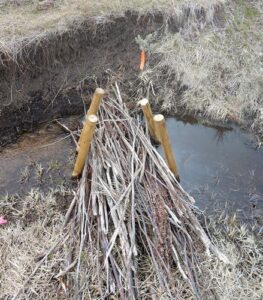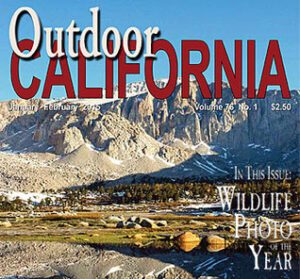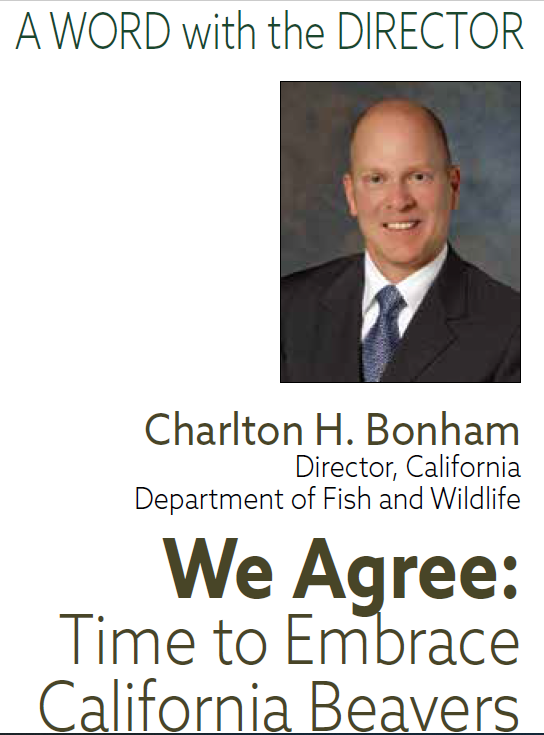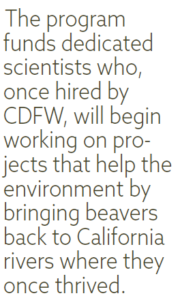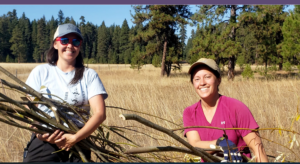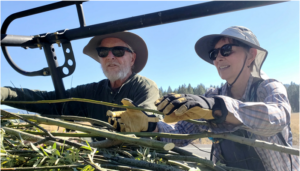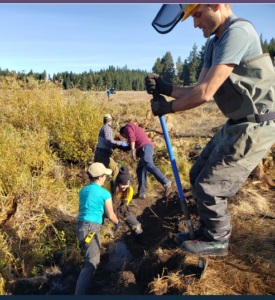Some days the headlines alone are enough to remind me that the world has shifted since I first took on the beaver mantel. There are parts of this article I can barely read without bursting into tears. I knew change would come eventually. I’m glad I was still here to see it happen.
Humboldt alumnus brings back beavers to restore California wetlands
For millions of years, beavers have been the stewards of North American watersheds. Over a hundred million used to ply the streams of the continent. Hunting and habitat loss since colonization have reduced their numbers to somewhere between 10 and 15 million, and many ecosystems which historically relied on beaver stewardship are now absent of the aquatic rodents. In 1941, there were just 1,300 beavers in California. Symbiotic Restoration, founded in 2018 by CPH alumnus Garrett Costello, is a company which seeks to reverse this loss of habitat.
“Our mission is to improve stream and meadow conditions to bring back the beaver,” Costello said, who graduated from Humboldt with a BS in environmental protection and management.
Remember it was a Humboldt grad student that did his thesis on what happened in Martinez when we agreed to cooperate with our beavers. There must be plenty of believers up that way.
BDAs are constructed at points in the stream where flow has been interrupted by a head cut, acting to fill the depression and preventing erosion from continuing upstream.
“As water hits that pond, it slows down and drops and that will slowly build sediment behind the structure, which then strengthens the structure and then it helps reconnect the floodplain because now we don’t have this incision,” Costello said.
Once the stream has been reconnected to the floodplain, the stream is able to meander more widely around. This turns a stream flowing quickly through a deeply cut channel into one which supports a wide, dense belt of riparian vegetation with its lazy flow.
Most of SR’s project sites are in places too remote for construction vehicles, where their use would undermine restoration efforts. Costello and his crew carry out their work the old fashioned way— with sweat, shovels, and axes.
Well the super old fashioned way is to allow beavers everywhere to do it themselves, but okay.
“The program is to incentivize private landowners to do conservation efforts on their land,” Costello said.
One goal of SR is to involve the communities in which they work as stewards of the land, fostering a bottom up approach to conservation.
“Last year, we partnered with Point Blue Conservation Science… we had 50 kids a day come from local elementary through high school to build beaver dams and plant willows with us,” said Costello. For the children, it was fun to build beaver dams in their community creeks.
“And all these kids were so stoked,” Costello said. “‘Oh yeah, go in the woods around here.’ Or, ‘Yeah, my parents work for the timber company in the town. We go hunting out here’. They have that sense of place,”
Even though much of SR’s work is still focused in Northeastern California, Costello hopes to make connections with local Humboldt community organizations in the future. He recently spoke to students in a capstone restoration course, and hopes to form a dedicated Humboldt crew to work on restoration projects in the county.
Let’s just hope that part of your work with landowners is to teach them how to resolve beaver conflicts while keep beavers around.
“Our mission is to improve stream and meadow conditions to bring back the beaver,” Costello said, who graduated from Humboldt with a BS in environmental protection and management.
Beaver will come back on their own. Our job is to just get out of their way.


